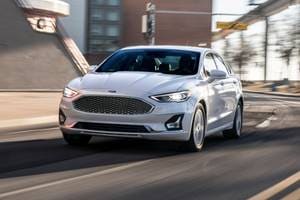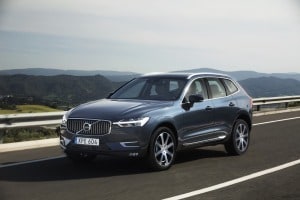Know Before You Buy
Market Segment
Hybrid vehicles range in size from compact two-seaters to eight-passenger SUVs, but most can be categorized as compact or midsize sedans or hatchbacks. Many hybrids, such as the Ford Fusion Hybrid, are based on conventional vehicles, and some, such as the Chevrolet Volt or Toyota Prius, are unique designs.
Price
A hybrid vehicle can be as much as 20 percent more expensive than its counterpart powered by a conventional gasoline engine. Plug-in hybrid or part-time electric models cost even more to purchase. The cheapest hybrid starts around $20,000, while the most expensive luxury model costs more than $100,000. Some advanced hybrid vehicles, including the Chevrolet Volt and BMW i3 with Range Extender, are eligible for federal and state tax credits that lower the purchase cost.
Performance & MPG
Hybrids vary in specification, but there are two general types. Regular hybrids (a gasoline engine and a battery recharged entirely by the car itself) deliver significantly increased gas mileage (40-50 mpg) at a typically higher purchase price. Plug-in hybrids have larger batteries recharged by the car as well as external sources that provide short-range all-electric operation and long-range hybrid operation.
Safety
Shoppers should find features such as antilock brakes, front-seat side airbags, full-length side curtain airbags and stability control as standard on every model. Rearview cameras are also increasingly standard, while high-tech electronics that warn inattentive drivers of blind-spot intrusion and impending collisions have migrated from strictly the luxury realm down to mainstream brands. Shoppers should also be aware of crash test scores produced by NHTSA and the IIHS.
Features
Luxuries such as rearview cameras, automatic climate control, heated seats, smartphone interfaces, navigation systems, keyless start systems and Bluetooth capability can often be found in non-luxury models. Look for them as you shop. Keep an eye open for differences in the number and type of seat adjustments and unique storage solutions, as well as home charging units that dramatically decrease recharging times.
Roominess
Most hybrids seat five people, just like a conventionally powered car. However, there are a handful of four-seaters, as well as a three-row SUV and some two-seat sports cars.
Cargo Space
A hybrid based on a conventional sedan might lose between 3 and 5 cubic feet of trunk space in order to accommodate the requisite battery pack. Likewise, a hybrid SUV might sacrifice some storage space under the cargo floor to accommodate the batteries. Payload capacity will also be reduced because of the impact of a heavy battery pack as well. Dedicated hybrid and all-electric models are packaged to minimize any compromises in passenger space and cargo volume, but payload capacity can still be an issue.
Cost to Own
The most important question has to do with "payback," which is the length of time it will take to break even on the increased purchase cost with cheaper running costs. The payback might range from several years to decades, depending on fuel prices. In terms of warranties, the carmakers usually offer longer coverage for the hybrid-specific components (about eight years), so you're covered if something goes wrong with the batteries or electric motor. The cost of replacing a battery pack varies, although it's not as expensive as consumers once feared.





